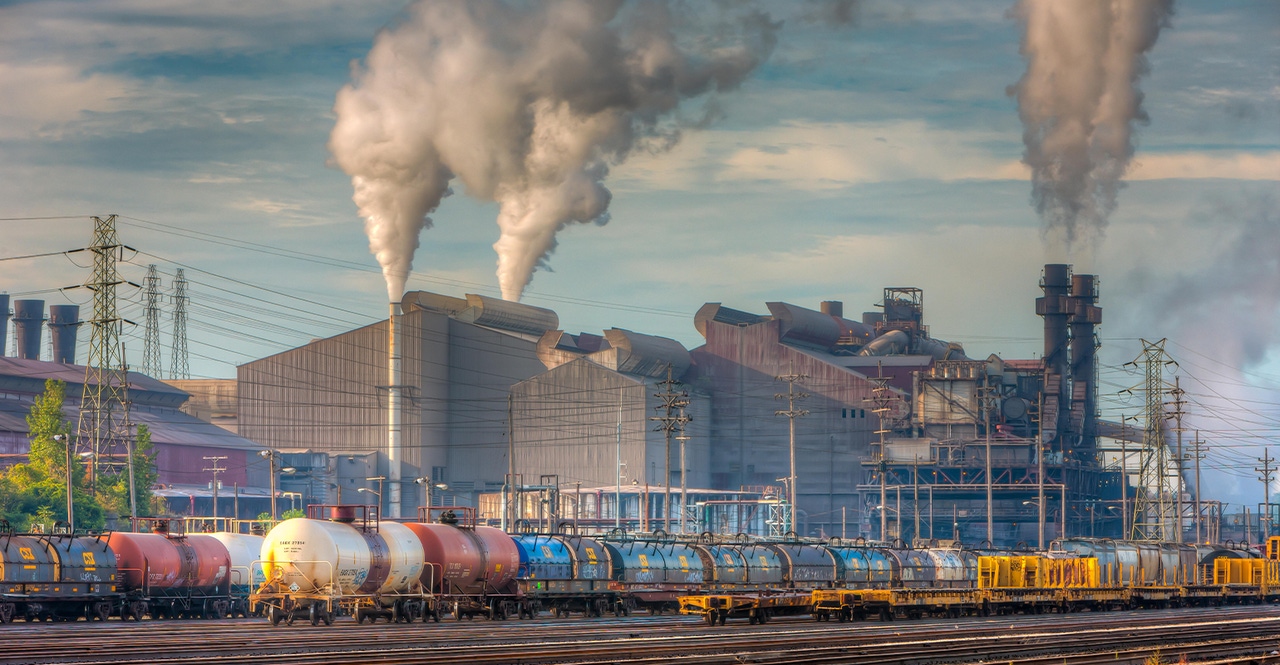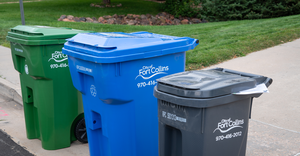How LanzaTech Keeps Carbon Out of the Sky and in Use
Synthetic biology and engineering company LanzaTech commercialized a technology that captures carbon from steel mills and ferril alloy mills before it is released into the atmosphere; it is then transformed into raw materials that are used in products traditionally derived from petroleum.

Conversations are heating up around the urgent need to decarbonize the planet, but the reality is that the whole world is made of carbon and we will continue to generate and use it.
Still, reaching net zero remains a priority and will require enormous reductions in emissions. With that realization, synthetic biology and engineering company LanzaTech commercialized a technology that captures carbon from steel mills and ferril alloy mills before it releases to the atmosphere; it goes on to be transformed to raw materials that are used in products traditionally derived from petroleum.
Plants get a new revenue stream through the sale of ethanol made from that carbon waste. And their customers have the carbon they need as a starting material for their packaging and products.
Offtakers come from the home cleaning products sector, textiles, personal care and cosmetics industries, the packaging and aviation sectors. To drop a few big names, adidas incorporated materials made from carbon into its tennis collection for the 2023 Australian Open. Coty launched a Gucci fragrance made from 100 percent emissions-derived ethanol. Unilever uses it in dishwashing soap, laundry capsules, and detergent. Now Dow is introducing a surfactant for cleaning products, and LanzaTech and L’Oreal are beginning work on polyethylene cosmetic bottles.
This is how it works: the technology captures carbon monoxide, which undergoes a fermentation process where bacteria consume the carbon and convert it to liquid ethanol in large-scale bioreactors built by LanzaTech. The technology is feedstock agnostic, says Kit McDonnell, a biologist and director of communications at LanzaTech. Pilots and demos are now underway that process agricultural waste and municipal solid waste, which she says can be used to make the same materials as from other carbon sources.
“We started out making ethanol as a fuel, but we quickly realized that ethanol could be the starting point for numerous additional applications,” McDonnell says.
Recycled carbon could actually go into all sorts of everyday commodities.
Plastipak is making food- and pharmaceutical-grade polyethylene terephthalate (PET) packaging from carbon that leverages LanzaTech’s process.
The drop-in resin, used by Plastipak personal care and pharmaceutical customers, has a 21.5 percent lower carbon footprint and requires 16 percent less fossil resources for its production compared to virgin PET, based on lifecycle analyses.
“The main step forward is that we are able to eliminate the fossil origin of the monoethylene glycol (MEG) component of PET – PET resin comprises 30 percent MEG, traditionally derived from petroleum,” says Filip Petrovic, business development manager Europe, Plastipak.
LanzaTech is moving into another area: recycling end-of-life goods, recognizing there will eventually be a need to manage all these products made from carbon emissions downstream.
“We have folks who are keen to see the technology used to help create a more circular system for materials, so we are looking ahead,” McDonnell says.
Bridgestone is vetting LanzaTech’s carbon capture technology as a possible way to recycle old tires. And sportswear brand On, who already has a running shoe made from carbon, is looking to reuse carbon in end-of-life shoes to make new products.
Brookfield Corporation has committed up to $500 million to build out the infrastructure, with potential to double the funds to help accelerate projects in North America and beyond. And in December 2023 LanzaTech announced an agreement with Olayan to fund projects in Saudi Arabia and possibly in the greater Middle East region.
Some of the overseas work is happening in partnership with governments and energy-intensive industries. Plants in India and Europe have become the first in those regions to leverage the carbon recycling technology. In India, IndianOil’s Panipat refinery offgas is being transformed into ethanol. And in Belgium, ArcelorMittal�’s Steelanol plant utilizes steel mill emissions to produce ethanol.
There’s more work in planning phases, including Project Dragon in Europe, an integrated carbon recycling and ethanol-to-jet fuel facility. With about $25 million in initial funding from the U.K. Department for Transport, this facility is intended to position Port Talbot in Wales as a new sustainable aviation fuel (SAF) production hub.
The focus is also on SAF in Abu Dhabi where LanzaTech is working with waste management company Tadweer to transform municipal solid waste into this high-demand commodity with LanzaTech sister company LanzaJet.
What’s driving the interest varies by region. From LanzaTech’s conversations and experience, the E.U. is looking at how to reach net zero; the Kingdom of Saudi Arabia has a range of circular economy initiatives aiming to strategically align economics with environmental benefits; and U.S. players are incentivized by policies such as the Inflation Reduction Act, which includes tax credits for carbon capture and storage and carbon capture and utilization technologies.
“In general, we are seeing carbon policy develop in many regions that support material circularity, which stems from both a climate perspective and an energy security perspective,” McDonnell says.
Japanese-headquartered Sekisui Chemical Company prepares feedstock to be fed into LanzaTech’s gas fermentation process to make ethanol.
Plans are to produce 12,000,000 to 13,000,000 liters a year from about 150 tons a day of Kuji City’s municipal solid waste (MSW). The ethanol will be used for one of two applications: plastic recycling or SAF. For plastic recycling ethanol will go to chemical companies to be converted to ethylene, and for SAF it will go to alcohol-to-jet fuel conversion companies.
The process fits in with a new direction Japan is taking given its waste management situation, believes Toru Ryoso, president and representative director of SBR, which is a joint venture between Sekisui and INCJ to commercialize the technology.
“Due to limitations of land, landfilling of burnable waste has been prohibited since 2001 in Japan. Currently all burnable municipal solid waste is incinerated.
“Japan is trying to shift to material recycling as well as chemical recycling. Our waste-to-ethanol process falls in the latter category of chemical recycling,” Ryoso says.
After studying a catalytic method to produce ethanol, SBR decided LanzaTech’s approach was more fitting to handle gas from MSW.
“The microbes can convert the gas efficiently to ethanol at ambient pressure and temperatures, so little additional environmental alterations (i.e. energy inputs) are needed in order to run the bioreactors,” Ryoso says.
By contrast, other industrial processes may require a high or low temperature or a specific pressure in order to suit their catalytic agent.
Says McDonnell: “We recognize how valuable ‘wasted’ carbon really is. Why keep pulling more oil out of the ground to make the things we need when we have aboveground carbon in major abundance?”
About the Author
You May Also Like




